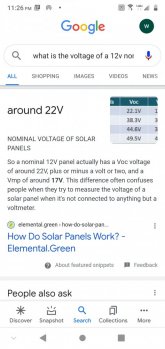The voltage coming from the panels will always be more than that from controller to battery. With same size wires on both ends you will lose less if you make the wire that is lower voltage shorter, so make the wire from controller to battery shorter if you can rather than the distance from panels. You can move it closer to panels but will likely need to consider upgrading size of wire that runs from scc to battery bank.
Only with MPPT. PWM panel voltage is same as battery voltage. It's how they work.



